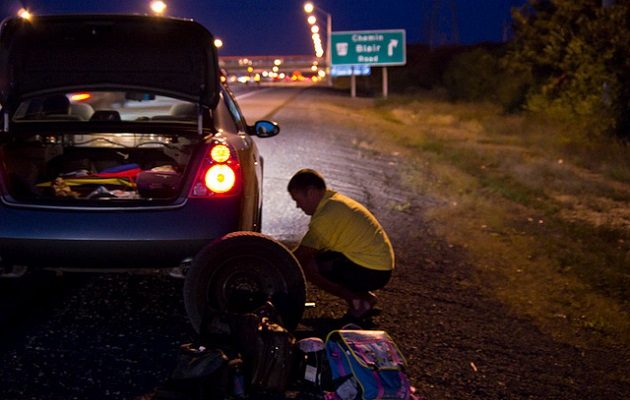As a car owner and driver, even if you have a newly purchased car or one that is in fairly good condition the unexpected can happen. It’s always better to be knowledgeable and prepared for the worst case scenario when on the road. Not only can it help save you precious time, but also some money in your wallet.
So here are the 5 things you can benefit from knowing:
How to Change a Flat Tire
With the many poor roads, don’t be surprised if you land yourself a flat tire while driving. But don’t worry, this is an easy fix you can do on your own with the right tools from the trunk. Before the change, find a safe and flat surface area and remember to have the car in park or in gear to avoid the car rolling. Next, take the jack to raise the car up on the side of the problem tire. Remove the hubcap (if present) and lug nuts using a wrench. You can now remove the damaged tire to put on the spare tire and place the lug nuts back on securely. This quick little fix has now saved you the need to call for help, which can sometimes mean a long wait and cost you.
Jump-Starting the Car
Unexpectedly your car dies and doesn’t start up. In many instances, you may just need to jump-start the car if you see other functions like the car lights still work. Have jumper cables available in your vehiclebecause now you can call on a friend or family member to come to you to help with jump-starting the car. When doing so, have both cars turned off at which point you can apply a red clamp to the (+) terminal of the battery of your car and the other red clamp to the helping car’s (+) battery terminal. Using the black clamp, apply one to the (-) terminal of the helping car’s battery and the other black clamp to an unpainted steel surface of your stalled car. Have your friend or family member start up their car, then you follow with starting up the dead car and you should be running again. Remember to keep the jumper cables handy in your vehicle at all times!
Checking Your Oil
It’s not just gas that you need to run the vehicle, but oil as well! Oil prevents your car engine from burning, so checking to ensure there is a sufficient level is important. With the vehicle turned off and cooled down, pop open the hood with the car on a level surface and pull up the oil dipstick (usually has a bright colored handle near the engine block). Wipe the stick clean and re-dip to pull out again to see where the oil level is. If it’s below the markings then add a half-quart of the appropriate oil and continue to check and add until it reaches the appropriate level. As to how often you should be checking your oil, once a month or even more frequently is recommended because if your engine is burning oil or has a leak, that should be addressed promptly.
Getting Your Tires Unstuck
The winter season will soon come upon us and that means roads filled with mounds of snow. If you find your wheels spinning away with no traction, you can dry shoveling the surface around and in front of the tires clean as well as using cardboard, your floor mats, a towel or even newspaper under the wheel to help gain traction. Don’t forget to keep a good shovel is the trunk during the winter season because it can be your real savior.
Checking Your Coolant
We talked about winter coming around and the chance of tires getting stuck, but let’s not forget about the need to keep the engine cool with coolant (antifreeze). Like checking your oil, pop open the hood and look for the clear plastic coolant expansion tank bottle for a level indicator to make sure there’s a proper level of coolant liquid in place. The frequency of checking on coolant may vary from car to car, so check your owner’s manual.
Knowing these basics as a car owner and driver will help keep your vehicle running smoother and have you well prepared for any hiccups that may come along while on the road. Happy and safe driving!
Photo by Charles Nadeau via Flickr. (CC BY 2.0)




